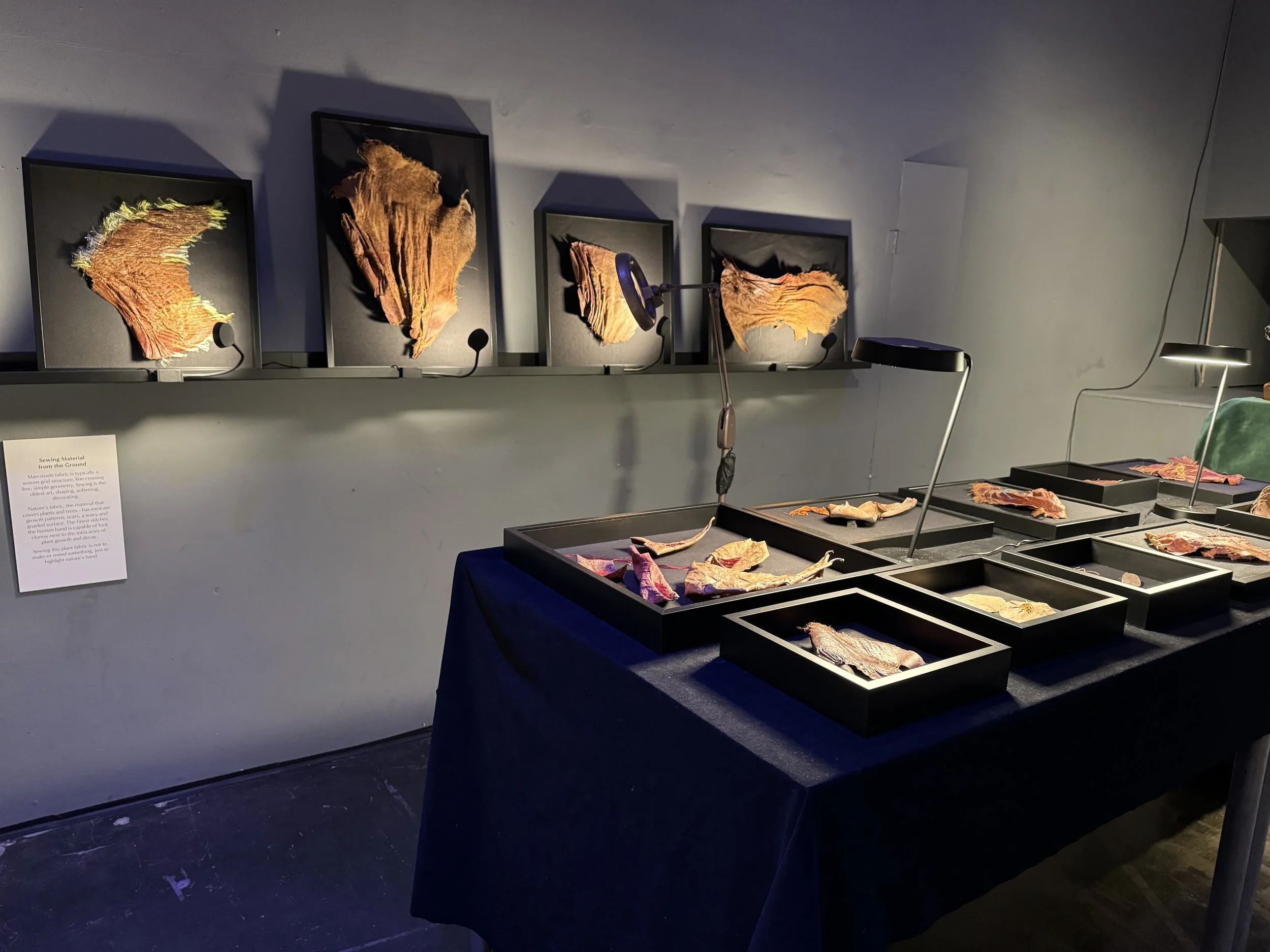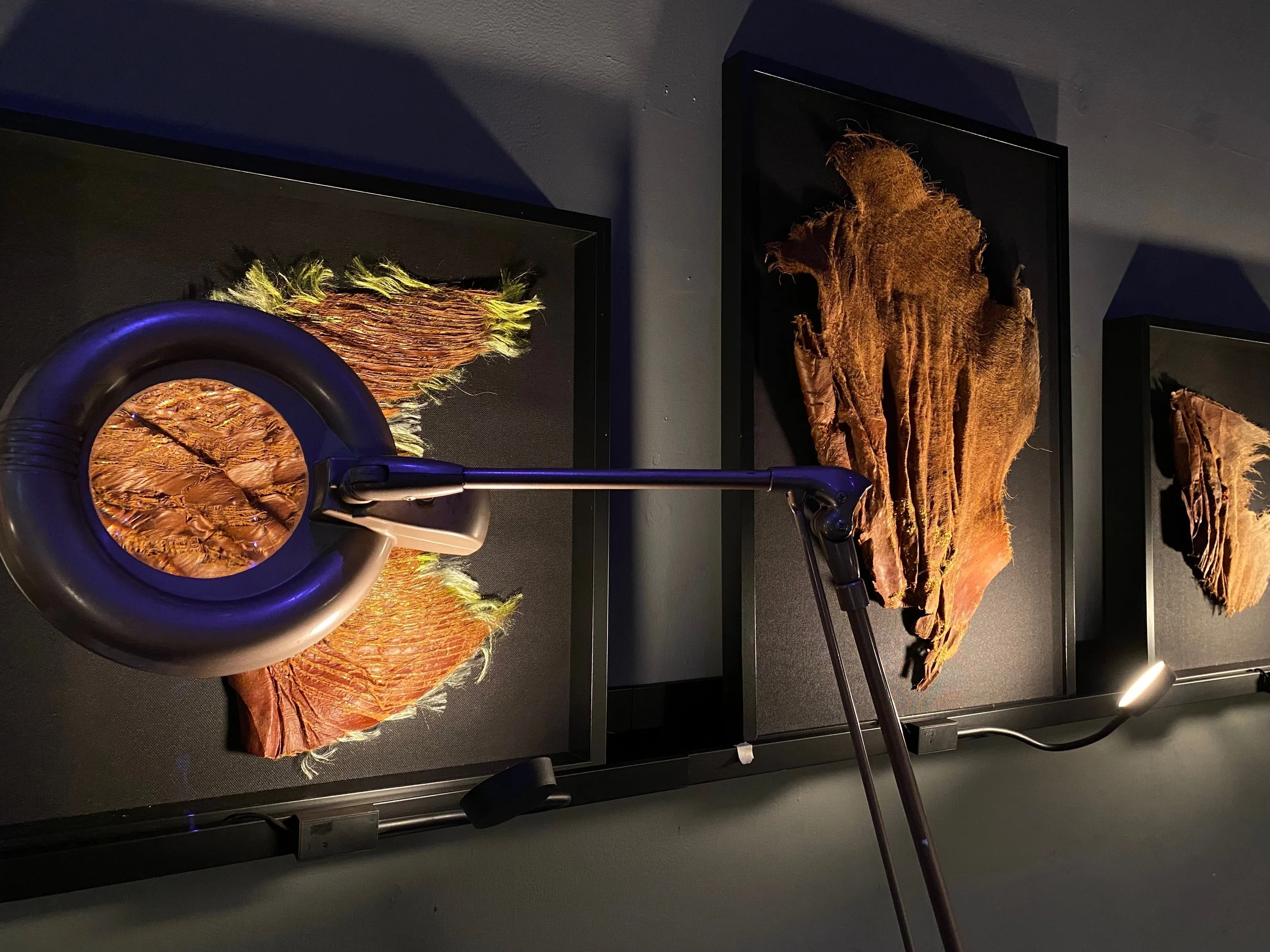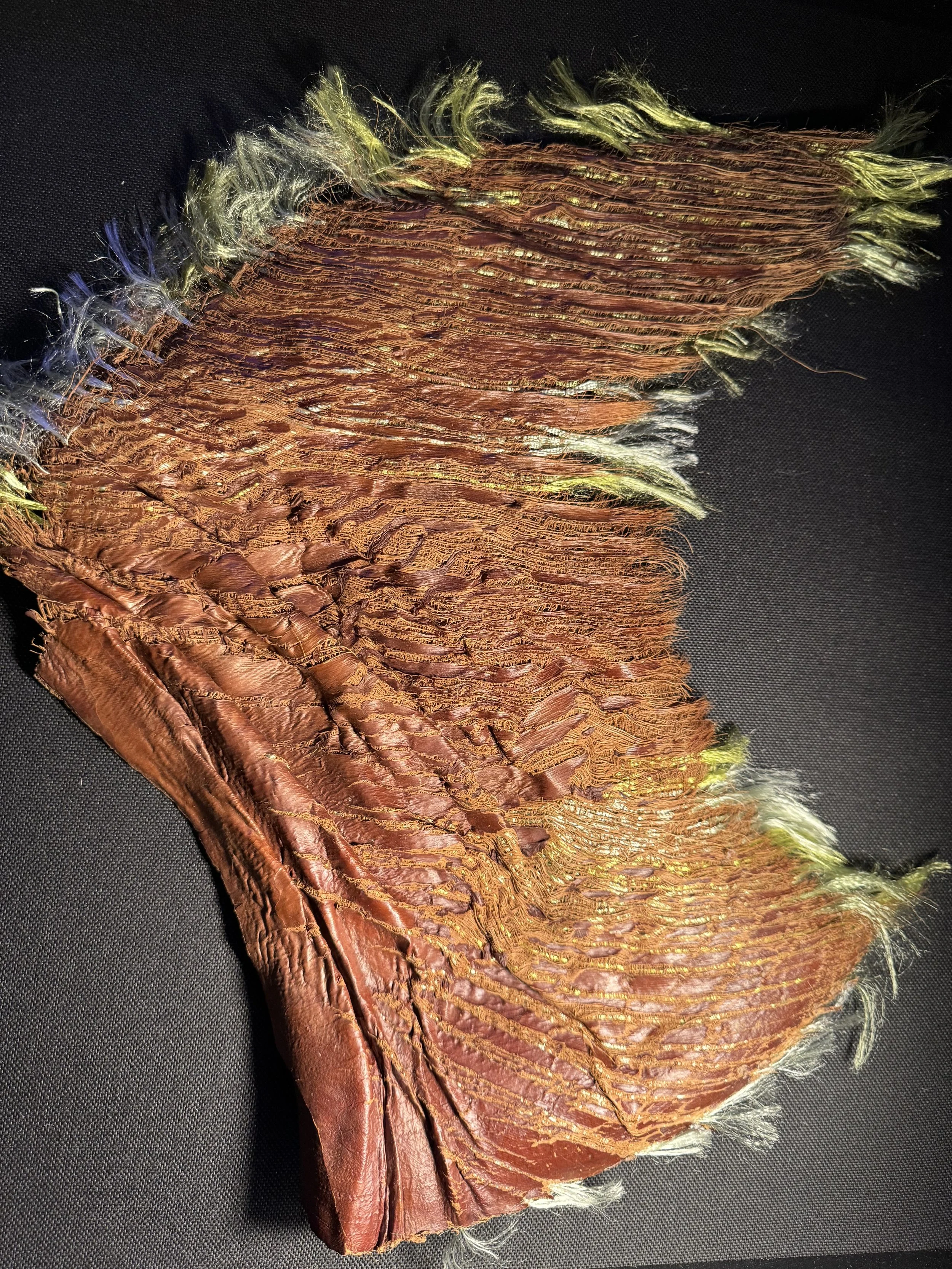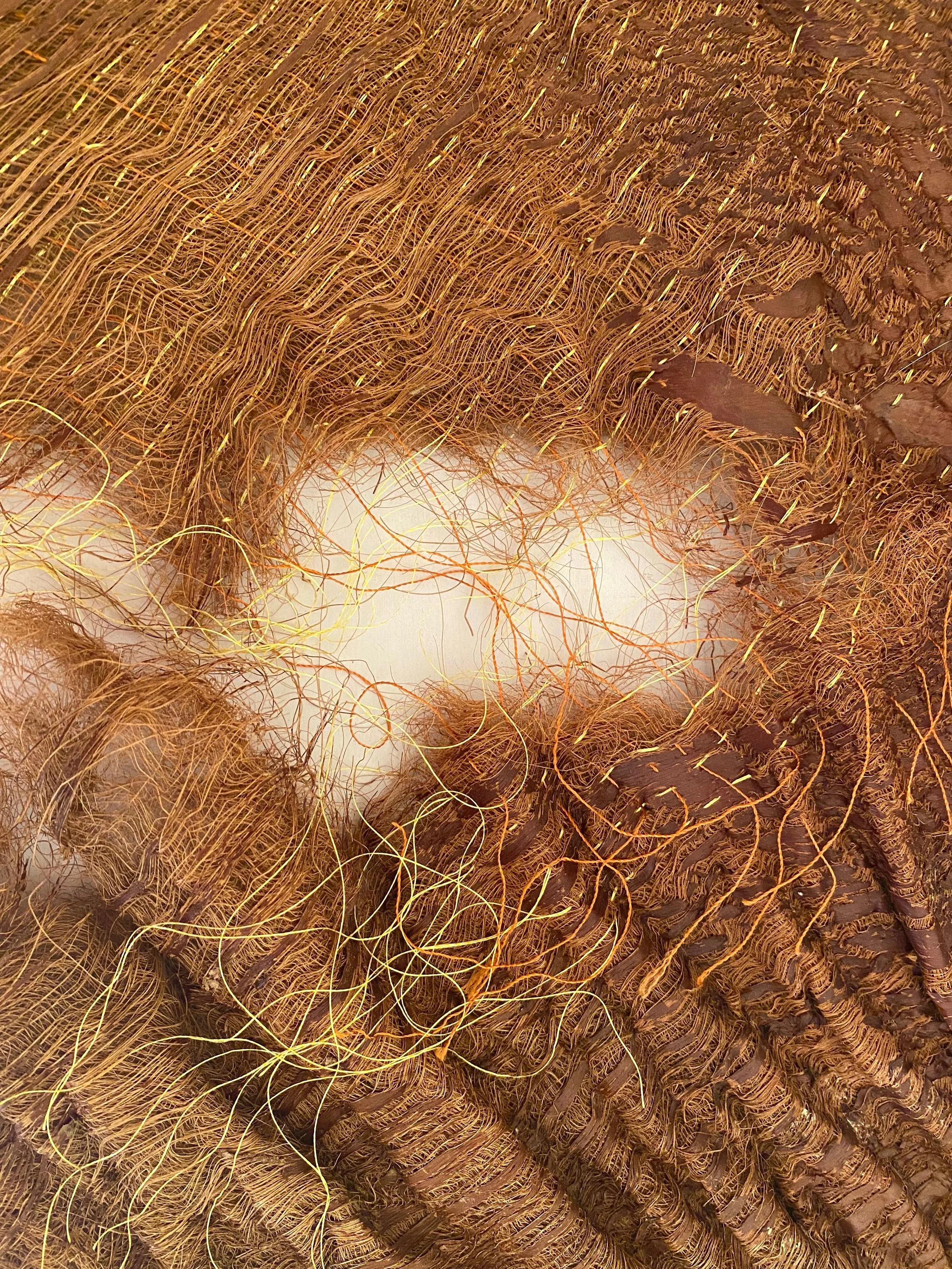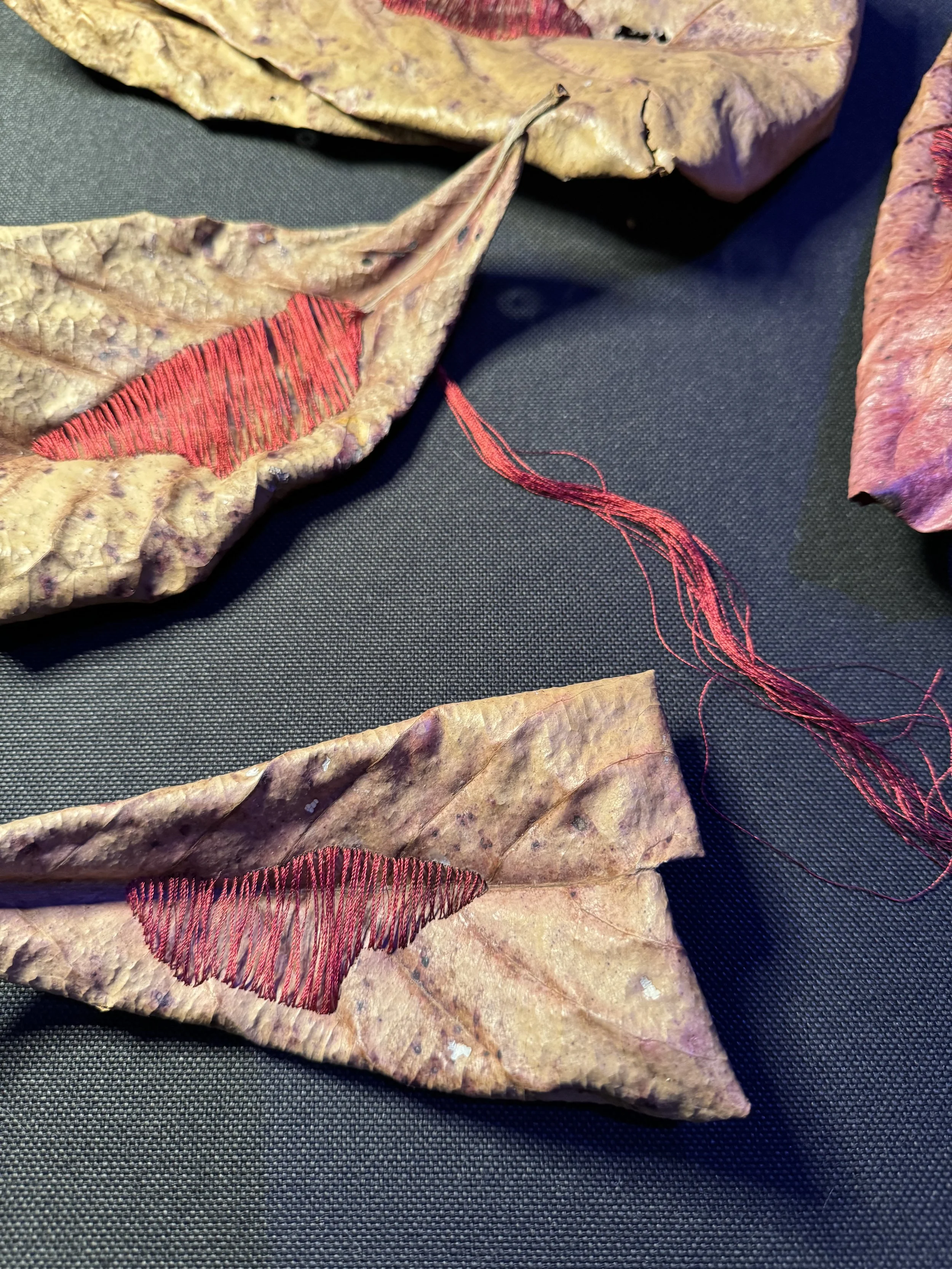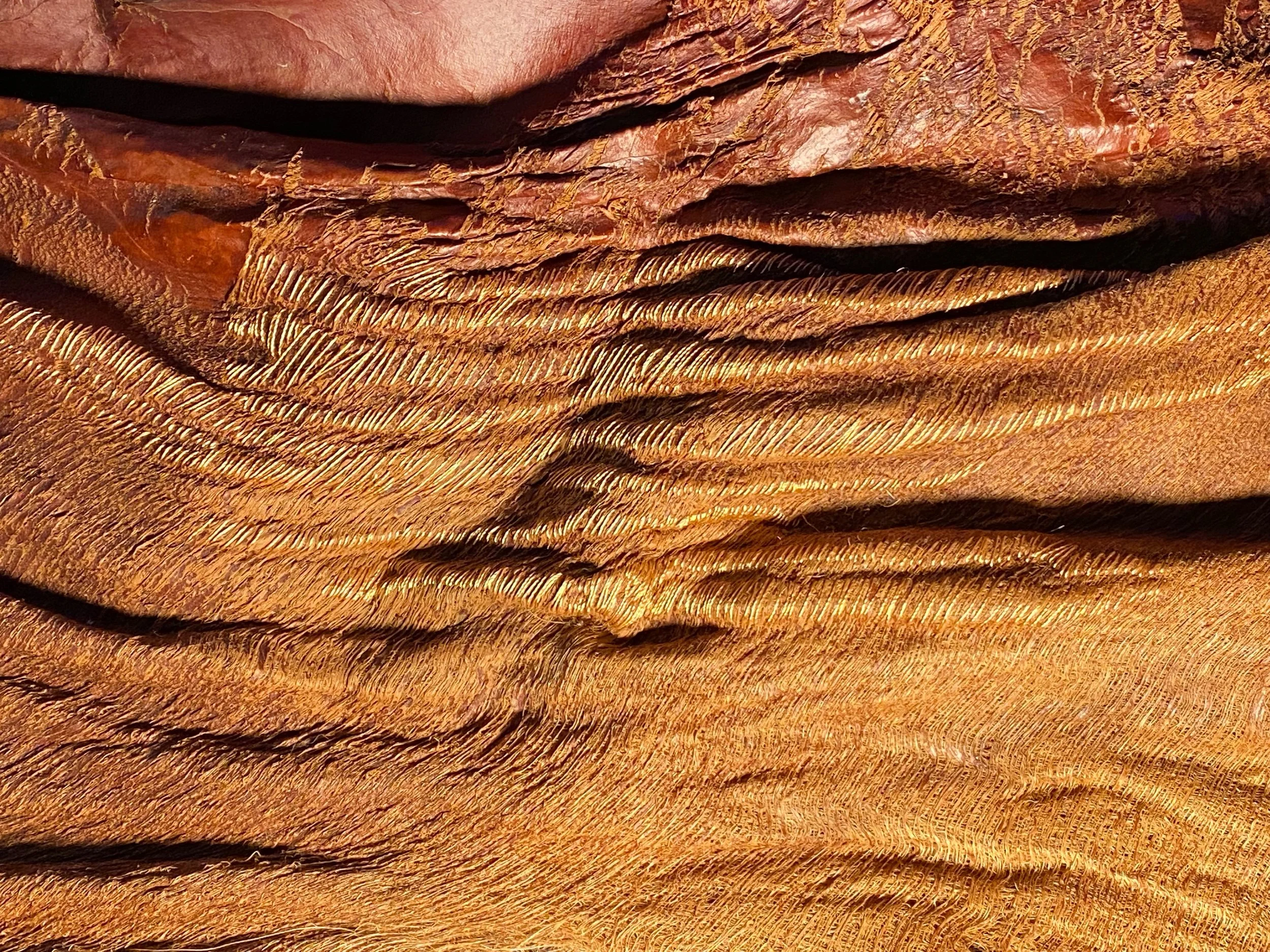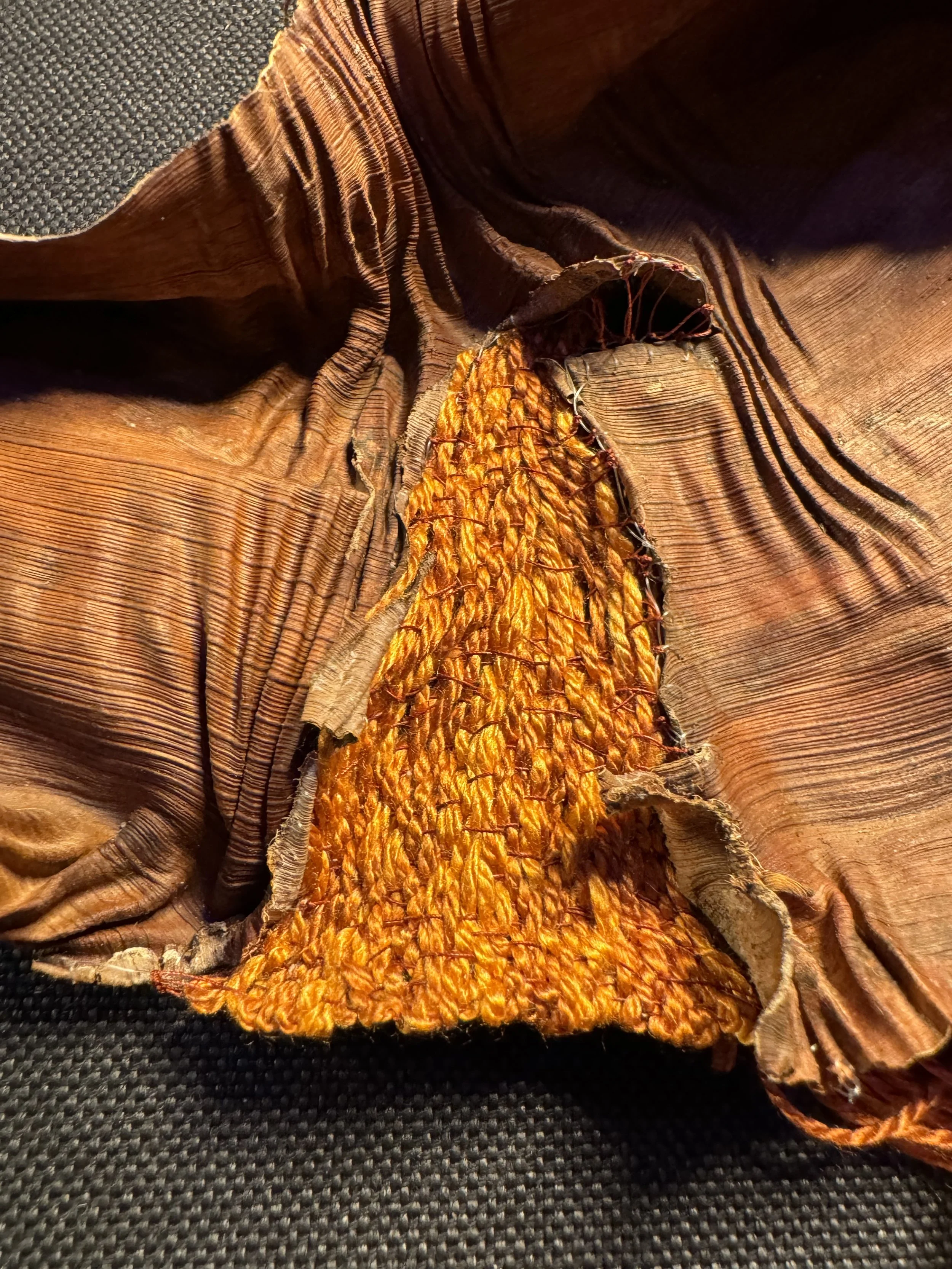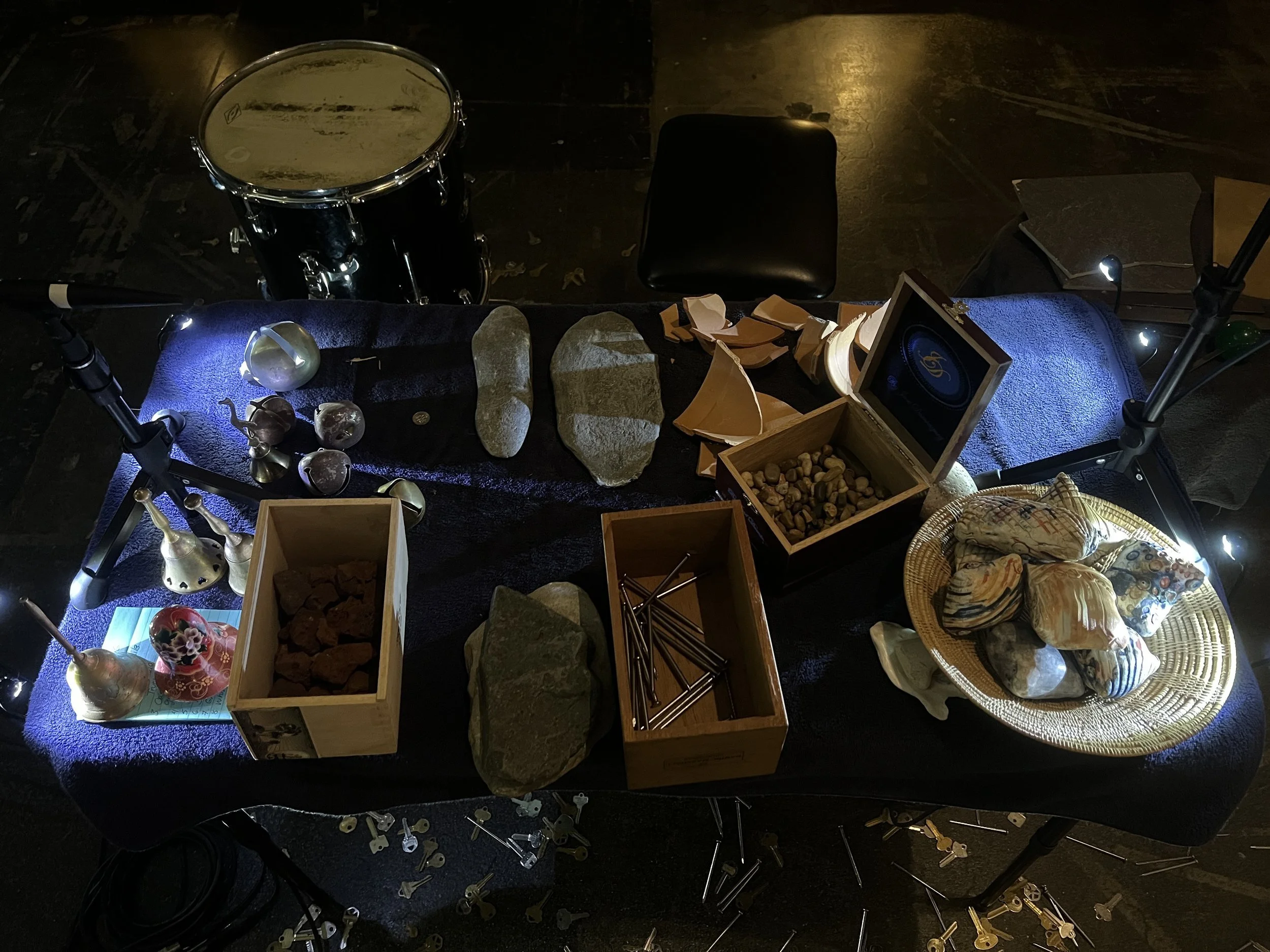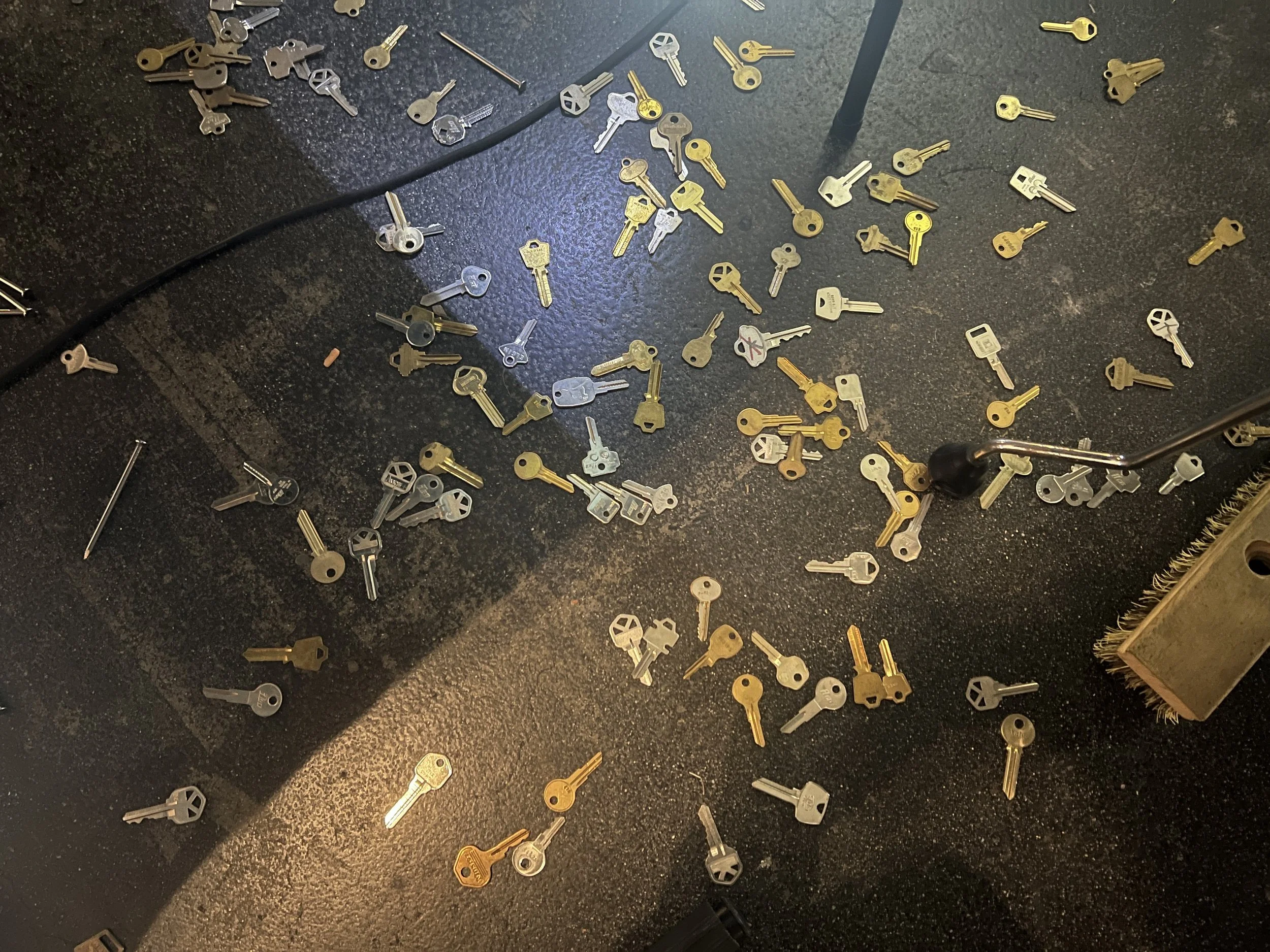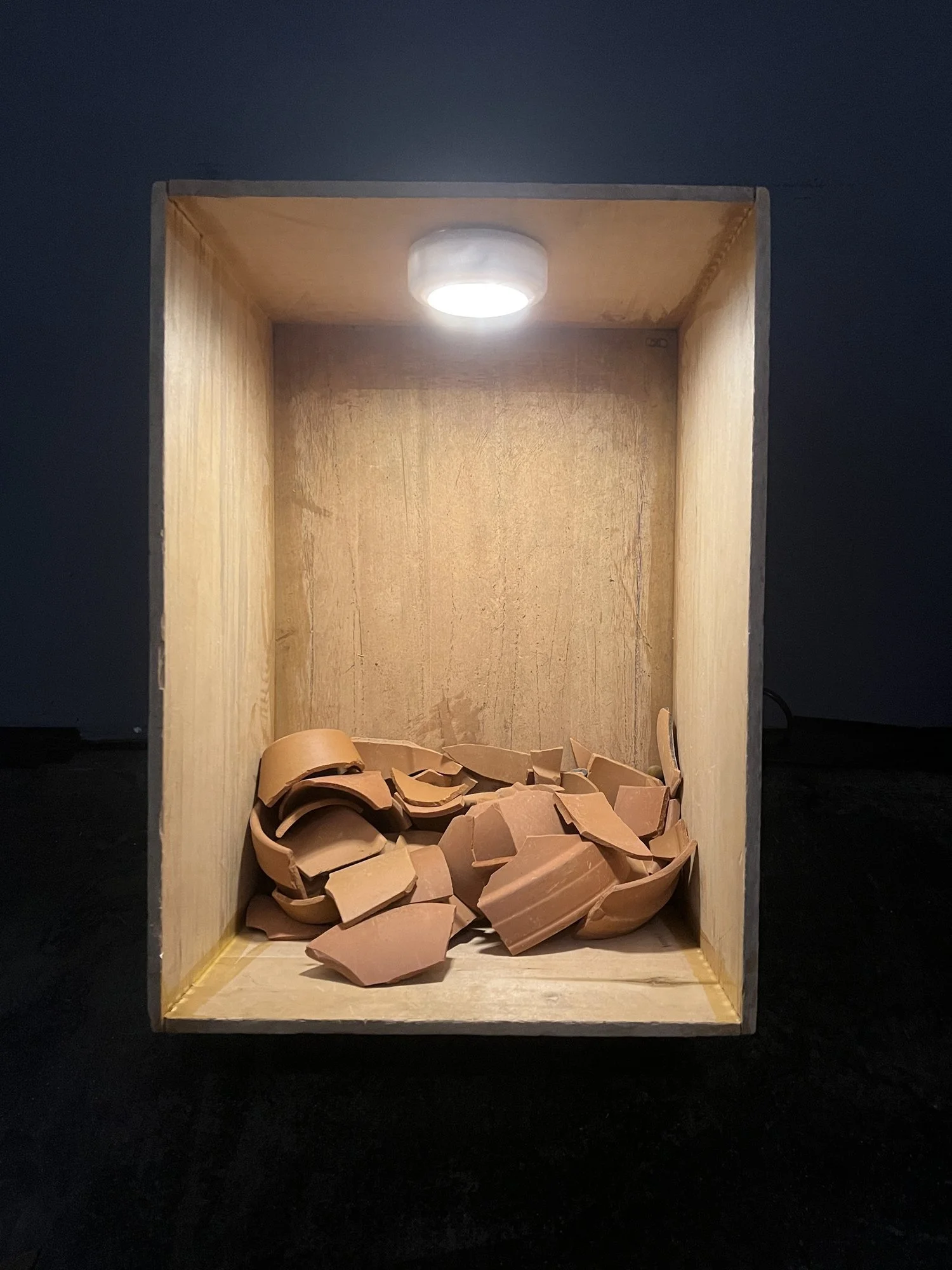Sewing material from the ground
Collaborative exhibition and performance between Sara Roberts, Cassia Streb, and Tim Feeney.
Several sewn objects assembled from palm bark, thread, and small objects.
Six-channel recorded audio installation made from a hail of particle sounds: pebbles, broken flowerpots, bottle caps, small bells, 10d nails, old keys, and river stones, and sounding via an array of speaker objects assembled from wooden boxes and transducers.
Twice, during the run of the exhibition, a live performance in the surrounding space, using portable speakers and a similar hail of organic and inorganic particles in audibly moving “pixels” of this soundscape through the location.
Click any image for enlarged slideshow.
About the collection
A few years ago I started picking up palm bark off the street. It looked intriguingly like distressed fabric, and seemed like it might be interesting to ‘mend’. It wasn’t long before I realized how ridiculous that is.
Sewing techniques rely completely on the grid-like weave of fabric and the tight geometry of stitching. Traditional mending and embroidery strive to be neat, to bring attention to precision and skill. Palm tree bark is nothing like the disciplined grid of man made fabric; the fibers weave and twist, the surface waves and buckles, multiple fine layers may suddenly grow together into one tough carapace. Sewing palm bark, and later, other types of plant fabric, proved to be an unorthodox and improvisational process. It requires extra thin, sharp, and sometimes very flexible needles to pierce without destroying delicate structures. Weaving the needle through these brittle passages of decayed fibers is an intense engagement with the very small decisions and patterns of plant growth. It’s a process I find intimate and mesmerizing.
What is ridiculous, but important, is that even very fine stitches on organic matter look weird and heavy-handed. My handwork looks vaguely reminiscent of sutures on skin (another organic fabric). And the palm bark has a more than passing resemblance to leather. What the stitching does most is highlight the difference in scale between human handwork and the unbelievably intricate and complex structure of plant life.
So, looking closely and seeing all that complexity was my reason for persisting with this. Looking, following, and with attempts to stitch like a plant, drawing others to look. Sewing not to make or mend, but to direct attention to the gulf between nature’s hand and our own.
Biography
Over the course of Sara Roberts’s career she has worked and shown internationally in many mediums; visual, sonic, sculptural and performative. During her early career she showed computer interactive video installations in San Francisco, Los Angeles, Finland, Denmark and France. She was on the founding board of the art space Machine Project and co-curated a long running series ‘Everyone Loves Difficult Music’ there. With her sound-making devices the Earbees, she workshopped sound events at the Walker Art Center, Miller ICA, the Hayward, London, and numerous other locations. She and the late Jordan Biren founded and co-directed the Reader’s Chorus, performing site specific choral works at the Velaslavasay Panorama, the Museum of Jurassic Technology, Automata Arts, Disney Hall, and the Geffen Contemporary. Currently emeritus after 25 years of teaching interdisciplinary arts at CalArts, she is now making her work in both ceramic sculpture and fiber, and has shown lately at Automata Arts, Chinatown.
sararobertsimaginarynature.com/sewnplantmaterials
Click any image for enlarged slideshow.
Cassia Streb and Tim Feeney build site- and situation-specific “hybrid” installation and live sounding actions, for placement in any accessible indoor space or outdoor grounds.
As composers and musicians living in an urban environment, we are hyper aware of the cacophony of sounds that surround us, from planes, air conditioners, leaf blowers and other machines, to organic sounds like children playing, birds singing, and leaves rustling. We relish brief moments of silence but are also intrigued by the moments when one sound suddenly stops and a different sound, one that has been happening all along, is revealed. We are interested in recreating this effect for an audience, who experience the sounds around them in different ways over the event, leading them to altered interpretations of their sound world.
Biographies
Canadian experimental artist Cassia Streb lives and works in Los Angeles, California, making bespoke music for specific situations and for special places, using viola, small percussion instruments, and found objects. Some of her recent projects include Sound House, a modular, interactive sound and puppet piece, and co-founding Music for Your Inbox, a digital concert platform that presents the work of experimental visual and sound artists.
Tim Feeney performs, composes, improvises, and builds environments in and for forests and grain silos, concerned with unstable sound and duration. He appears in bookstores and basements with Sarah Hennies and Greg Stuart; in galleries and libraries with Vic Rawlings and Annie Lewandowski; in colleges and museums with Andrew Raffo Dewar, Holland Hopson, and Jane Cassidy; on recordings for Full Spectrum, Sedimental, and Marginal Frequency; and in the occasional festival or concert hall with Anthony Braxton and Ingrid Laubrock.
